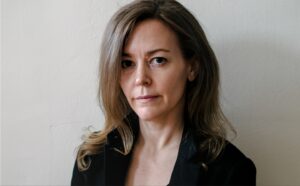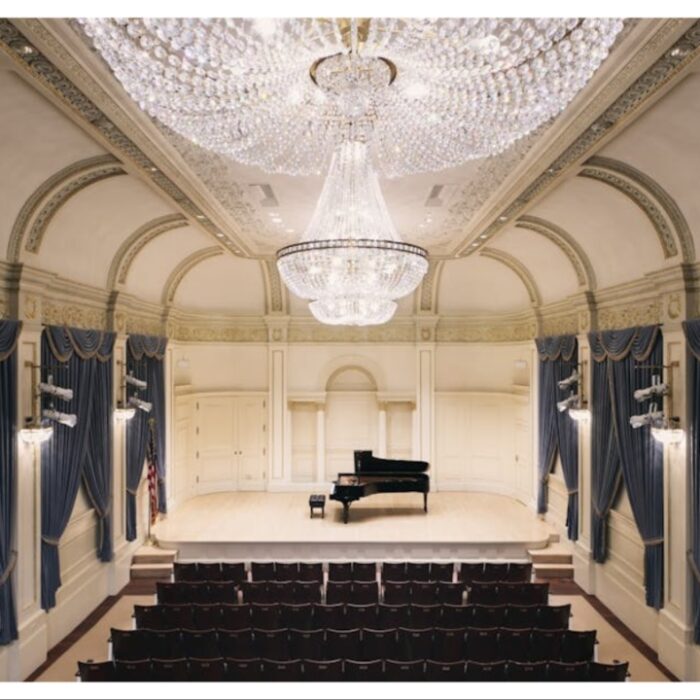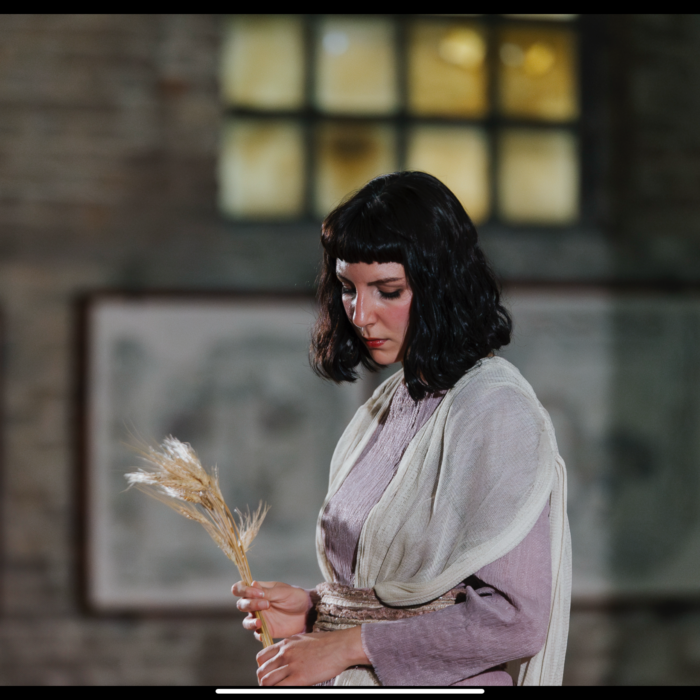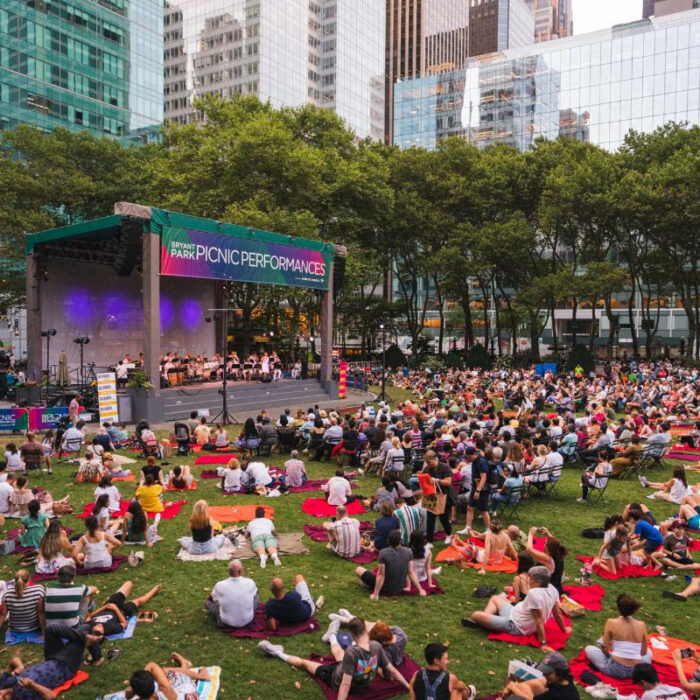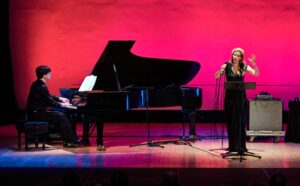
Columbia University School of the Arts Miller Theatre 2023-24 Review: John Zorn at 70
Composer Portraits Featuring Soprano Barbara Hannigan
By Jennifer Pyron(Photo credit: Rob Davidson for Miller Theatre)
Columbia University’s Miller Theatre featured “John Zorn at 70,” with works by avant-garde and experimental composer and conductor John Zorn on November 16, 2023 to a sold out audience.
Zorn, well-known for his “deliberate category resistance,” is one of New York’s most important composers. His support for his artistic community is unconditional and refreshing, especially given the abundance of collaborators who always manage to come together and celebrate him. “John Zorn at 70” was particularly historical because its breadth of expression, which Zorn’s compositions manifest as a whole. However, what made this live performance so special was based on the featured group of musicians.
There is no better way to experience the methodical and abstract alignment that is uniquely Zorn, observing the pulse that emanated like a live wire, buzzing and evoking dynamism between the notes and text generated by soprano Barbara Hannigan. She captured the brilliant complexities and interpretations in ways that felt supernatural. Hannigan’s voice is of the ethereal. Her soprano’s transparent and translucent effect is like a window suspended within each of Zorn’s pieces, guiding forth the infinite interpretations of enigmatic reasonings. Words are limiting when it comes to describing how Hannigan’s voice might make one feel the hairs on the back of their neck, raising in attentive awareness. Hannigan’s voice made “John Zorn at 70” a soul stirring journey for all.
Split the Lark (2021)
“Split the Lark,” for soprano and piano, features seven nocturnes inspired by the envelope fragments of Emily Dickinson. Stephen Gosling on piano played the opening melody of the first nocturne, “And yet we know that gentle Clock,” with beautiful refinement. The stage’s back wall lighting was a fiery Pantone retro pink with gradient details, capturing the excited flourish from the audience as Hannigan began to sing. Her voice entered on an [u] vowel with warm assuredness like a lullaby, unfurling to become a series of vocalises aligned with Gosling’s playing. There was a sense of wonder floating in the air. Nocturne two, “Her magic pace,” was reminiscent of a creative spirit exacting its course in study of a “visitor in paradise.” The tempi quickened and developed into nocturne three, “Like the Wheels of Birds,” reminding one of early Fauré in its fluttering melody. The song cycle became weightless in this moment, taking flight and leaving any concerns behind. Zorn’s imagination was the driver from this point forward. Hannigan’s vocal precision was exquisite. The moment where she dove head first into the growing tide of glissandos felt intelligently calculated and full of life at the same time. She is the master of her craft and the audience loved it.
Nocturne four, “Do our Nature’s soft,” was a slower tempi and Hannigan’s voice floating in the upper registers. There were moments when Gosling plucked the piano strings in contrast to Hannigan’s sweeping vocal gestures. This was a playful combination. Nocturne five, “To light, and then return” was a nostalgic melody reminiscent of John Adams’ “Hallelujah Junction.” The voice part joined the piano playing with a refreshing fervor, Hanning and Gosling smoothly glided along. “Split the Lark – and you’ll find the music – Bulb after Bulb, in Silver rolled,” sang Hannigan. Nocturne six, “Eternity will be Velocity,” began with Hannigan whispering the text, “who says the absence of a Witch invalidates his spell.” The piano’s melody mysteriously swept up from behind and Hannigan’s voice emanated a conjuring. This particular moment was fun for the audience and one could hear the collective breath utter a quick gasp. The final nocturne, “By that bleak Exultation,” was the perfect sendoff, carrying forward the memories of Emily Dickinson and her dreams.
Liber Loagaeth (2021)
The world premiere of “Liber Loagaeth,” a prayer in angelic numbers, featured Barbara Hannigan, voice and JACK Quartet: Christopher Otto, violin; Austin Wulliman, violin; John Pickford Richards, viola; Jay Campbell, cello. “This is something between a prayer and a spell,” said Zorn before the piece began. Barbara Hannigan was staged at the top of JACK Quartet’s semi-circle. The backlight was a crystal clear cerulean, like a sky full of wonder or a body of water cast in the vast horizon beyond. Hannigan lifted her arms and eyes as the piece began, dissonant string frequencies made perfect, her voice effortlessly cascaded on top. A sudden strike of the bow lilted listeners into an atmosphere of amazement. There was no text for Hannigan to sing in this piece, which only added to the imagination of what her vocalises signified. One might have visualized a specter in the midst of a heavily wooded forest, rising above the rushing autumn wind.
JACK Quartet sounded like one body as they played and did a remarkable job with sustaining tension in this piece. Never once did a note go flat or stagnant. Every intention was felt through every note. This was a rare and very special live contemporary music performance. Listeners may have felt suspended in time and space by the end.
Star Catcher (2022)
“Star Catcher” is a surrealist fantasy for Spanish painter Remedios Varo, drawing inspiration from her works: “Star Catcher,” “Flying Owl Woman,” “Exquisite Corpse,” “The Fabric of Dreams,” “Funambulists (tightrope walkers),” “Metaphysical Wheels,” “Enchanted Knight,” “Witch Going to the Sabbat,” “Woman with Sphere,” and “Mimesis.” Musicians for this piece included Barbara Hannigan, voice; Stephen Gosling, piano; Jorge Roeder, bass; Ches Smith, drums. Each one of Varo’s works acted like a movement or a riff for the musicians to be inspired by and interpret together. There were many moments of accelerated tempi and vocal text that raced out of Hannigan in a rush to keep up. Her voice remained resilient and ready to take on any improvised decision needed to be made.
Remedios Varo considered surrealism to be an “expressive resting place within the limits of Cubism, and as a way of communicating the incommunicable.” In late 1938, she participated in a collaborative series, Jeu de dessin communiqué (Game of Communicated Drawing) of works with artists Breton and Péret. The series was much like a game, which began with an initial drawing, which was shown to someone for three seconds, after which that person tried to recreate what they had been shown. The cycle continued with the showing of their drawing to the next person, and so on. Apparently, this led to very interesting psychological implications that Varo later used in her paintings many times. John Zorn’s homage to Varo, “Star Catcher,” is the musical conjuring of this collaborative series. The musicians’ contributions were specific to this performance, and it was incredible to feel the creative energies coming to life!
Ab Eo, Quod (2021)
“Ab Eo, Quod” is for soprano, cello, and vibraphone with optional improvising drum set and/or electronics. It is an evocative ballad inspired by the surreal worlds of British painter Leonora Carrington. It is also important to note that Carrington was also a founding member of the women’s liberation movement in Mexico during the 1970s. Her “Ab Eo, Quod” painting was created in 1956 after Carrington had developed a deep bond with surrealist painter Remedios Varo. “Ab Eo, Quod” is said to be a form of transmutation of the role of the domestic female which exposes the spiritual work that domestic nurturing entails.
John Zorn’s musicians for this piece included Barbara Hannigan, voice; Sae Hashimoto, vibraphone; Jay Campbell, cello; Ikue Mori, electronics; Ches Smith, drums. Hannigan’s voice and Sae Hashimoto’s vibraphone playing began with an interesting combination of short melodic phrases. Every note had a beautiful tone and ring in the theater. Ikue Mori’s electronics sounded excellent in the space too. There were moments were they slid into the background and spatialized from the walls, sliding into the forefront to then sneak back into the walls. It was incredible.
Hannigan’s voice sounded pure and weightless. It is remarkable how she maintains her stamina and grace while singing complex material and improvising. Her upper range has a brilliant quality that is her signature. She sounds good with instruments of all kinds, especially in Zorn’s works.
Pandora’s Box (2013)
“Pandora’s Box” featured Barbara Hannigan’s voice and JACK Quartet performing five movements. The text, written in German by Zorn, illuminated ideas of questioning dreams, devilish sunbeams, alchemical contradictions, and aetherial soul-shadows. Hannigan’s voice was perfect for this piece, singing the German diction she aligned with JACK Quartet’s playing extraordinarily well. In the middle of movement two, JACK Quartet played a whole new dimension of suspended bowing and tension driving dissonances.
This might have been one’s favorite part. There was also a moment in between movement three and four where Hannigan did vocal acrobatics that surely stirred souls in the ether. As a vocal improviser, one might have been astounded in this moment. She was an unstoppable force of vocal power!
Nasdar (1969)
The world premiere of “Nasdar” was introduced by Zorn as one of the first pieces he wrote at the age of 15-years. True to his composition style, “Nasdar” has similar ideas to his other works. However, what sets “Nasdar” apart is the minimal piano playing that seems to jump into short ideas and never finish them. In fact, the piece did not really have an ending. Despite this sounding off-putting, it was a very honest and appreciative moment necessary to close this evening’s performances. John Zorn at 70 reflecting on John Zorn at 15, celebrating the splendor of life as an artist, surrounded by his close friends.
